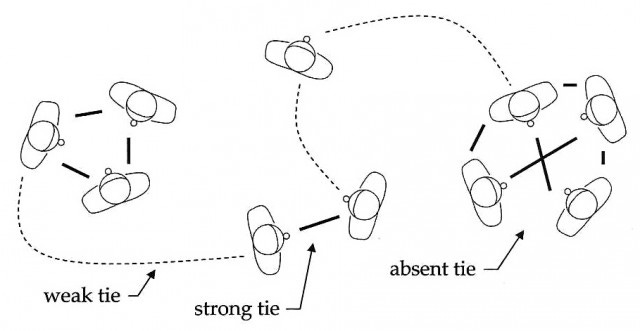If you can’t see yourself being friends with someone for life don’t refer to them introspectively as a friend even for one day.
This is a heuristic that has been my Northstar when forming relationships over recent times. It is valuable in the sense, that most of the hurt comes from temporary short-term ‘friends’ who we mislabel and as a result assign unrealistic expectations.
A potential downside is missing out on people, who we likely met in a limitive context, displaying a shadow of themselves, which in turn led us to miscategorize.
Still, I hold tight to this heuristic, since it works a charm 8 out of 10 times and enforces the importance of social compartmentalization.
It even becomes exponentially more valuable, because it teaches us where to draw the line between friends and acquaintances. In the process, leaving room to adjudge the desired value from both networks.
The social process from acquaintance to friends is an inter-determinate period where it’s more of an art rather than a science and the few with the know-how of how to work the weak ties excel.
Social network theory views social relationships in terms of nodes and ties. Nodes are individual actors or collective of individual actors such as families, organizations, nations, and ties are the relationships between the actors. Therefore, a social network is a map of all of the relevant ties between the nodes.
Granovetter in his landmark paper, “The Strength of Weak Ties” introduced the concept of ties and their significance to a social network.
Strong ties = emotionally close, multiple bases for interaction, mutuality, kinship, traditional community ties, bonding social capital (strong ties in small groups) – family/friend, volunteering help, invited home
Weak ties = emotionally distant, thin trust, only know online, bridging social capital (weak ties between many people) – workmate/acquaintance, paid to help, not invited home.
Absent ties = lack of a relationship and if existant no substantial significance, a ‘nodding’ relationship between people living on the same apartment block.

Trust, norms, and networks are the dominant distinguishing factors between the ties. In simpler words, social capital.
Social capital is to networks what money is to economies. And just as money’s value goes up and down in relation to things and in relation to different money, social capital also includes reputation, popularity, and trustworthiness, which can increase or decrease in value relative to the network around it.
It is therefore no surprise that we consolidate around our strong ties since they are a good support network.
Homophily principle: similarity breeds connection.
The strong tie networks provide a safe haven governed by trust, conformity, and loyalty. All desirable and vital part of the value adds of our social network.
On the flip side, it introduces redundancy in knowledge, activities, and friend sets.
Heterophily principle: love of the different.
More often than not, this sets us up to lose sight of the enormous benefits of weak ties.
Weeds are flowers, too, once you get to know them. —A.A. Milne (Winnie-the-Pooh)
While the average person focuses on the inner circle as the sole epicenter of value, the super connectors, mavens, influencers, influential politicians seek to exploit the weak tie relationships.
How we engage the weak tie is a key differential because it brings us non-redundant information across structural holes. This is how we inhabit more worlds than we live in.
Weak social ties are responsible for the embeddedness and structure of social networks. They are intrinsic driver as to why we post on social media. The why behind why we join communities. These ties transcend the clique to its other friends and acquaintances and more importantly transmit more novel information than strong ties.
Back to my heuristic.
“If you can’t see yourself being friends with someone for life don’t refer to them introspectively as a friend even for one day”.
This heuristic can be invariably referred to as a gatekeeper in my interpersonal ties. Everyone has one knowingly or unknowingly.
If the key is to build a ‘metaphysical network” that takes advantage of the upside of both strong and weak ties, then the social network update would be:
- Closely guard the inner circle entry point by asking “Can I see myself being friends with this person for life?” at the door and introspecting. The gut feeling is a better forecaster than the mind.
- If the answer is not immediately clear, then create a robust social circle waiting room, that is tolerant of current social deficiencies but that does not rock my foundational values, and that is active in bridging social capital.
- The above is only possible if we know how to wield the art of social compartmentalization.